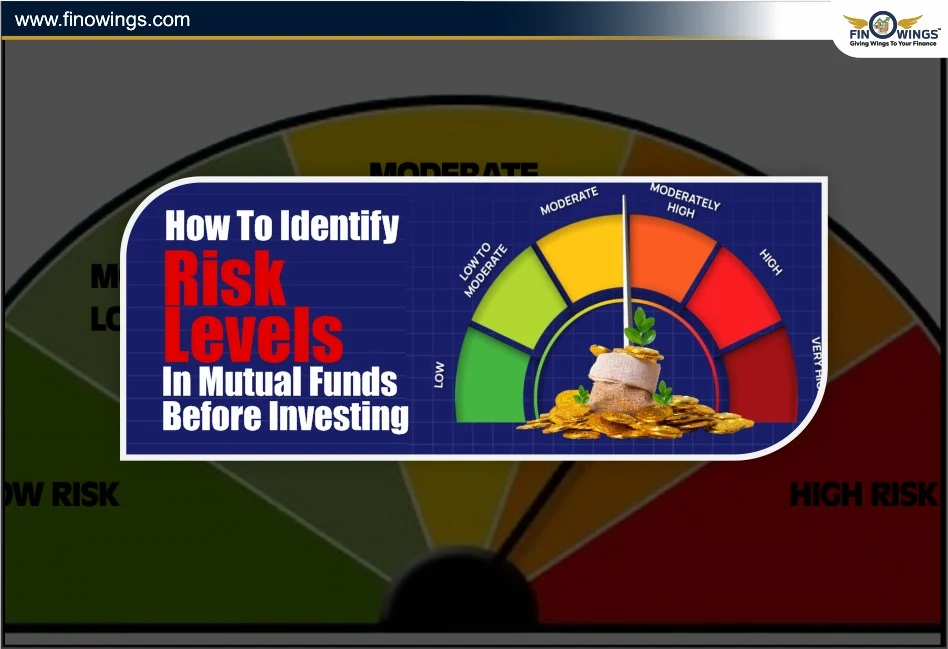Home >> Blog >> Taxation on Mutual Funds in India
Taxation on Mutual Funds in India

Table of Contents
- Introduction
- Why Mutual Fund Taxation Matters
- Types of Mutual Funds for Taxation Purposes
- Equity Mutual Funds Holding Period
- ELSS Funds (Tax Saving Mutual Funds)
- Debt Mutual Funds Taxation
- Taxation Rules for Debt Funds (Post April 1, 2023)
- Debt Fund Holding Period
- International & Fund of Funds Taxation
- How to Calculate Capital Gains Tax in India on Mutual Funds
- Mutual Funds: Dividend Taxation
- Investing in Tax-Saving Mutual Funds (ELSS)
- Mutual Funds and Tax Deducted at Source (TDS)
- Tax Saving Strategies For Mutual Fund Gains
- Taxation Summary Table for Mutual Funds (FY 2024-25)
- How to File Mutual Fund Gains in ITR
- Tools for Calculating Mutual Fund Tax in India
- Conclusion
Introduction
Taxation on Mutual Funds is one of the most crucial elements of investing, but most investors ignore it. Understanding the tax laws governing mutual funds will help one plan investments more successfully, save more money, and make better selections. This blog covers all you need to know about mutual fund tax in India, including the tax implications for various fund kinds, capital gains tax in India, and how to lawfully maximize your returns based on the tax consequences.
Why Mutual Fund Taxation Matters
While mutual funds are managed professionally, taxation consequences differ based on the category of mutual funds, the holding period, and the type of gains.
Understanding this helps you:
Select tax-efficient mutual funds, determine the ideal holding periods, avoid unnecessary short-term tax outflows, and increase wealth after all taxes are paid.
Types of Mutual Funds for Taxation Purposes
In India, for tax reasons, there are various types of Mutual funds:
1. Equity-Oriented Mutual Funds
2. NonEquity Mutual Funds (Debt, Hybrid, etc.)
This separation shows how the capital gains tax in India works. Let's sift through it.
Taxation of Equity Mutual Funds
Equity mutual funds allocate 65% or more of total assets to equities and equity-related assets.
Types include:
-
Large, Mid, and Small Cap Funds
-
Equity Linked Savings Schemes (ELSS)
-
Index and Sector Funds.
Equity Mutual Funds Holding Period
|
Type of Gain |
Holding Period |
Tax Type |
|
Short-Term Capital Gain (STCG) |
Held for less than 12 months |
15% tax |
|
Long-Term Capital Gain (LTCG) |
Held for more than 12 months |
10% tax (above Rs. 1 lac gain) |
Example: Suppose you invested Rs. 1,00,000 in an equity fund and after 1.5 years, you redeemed it for Rs. 1,40,000.
Gain = Rs. 40,000
Since it is long-term and below Rs. 1 lac, you do not pay tax. If your gain was Rs. 1.5 lac, then Rs. 50,000 (the portion over Rs. 1 lac exemption) will be taxed at 10%.
ELSS Funds (Tax Saving Mutual Funds)
Equity Linked Savings Schemes are special equity funds that provide Section 80C tax benefits up to Rs. 1.5 lac annually. ELSS Funds have a 3-year lock-in period and are one of the most popular tax-saving options under mutual fund taxin India.
Debt Mutual Funds Taxation
Debt funds primarily invest in fixed-income instruments like bonds, treasury bills, and debentures.
Taxation Rules for Debt Funds (Post April 1, 2023)
Debt funds used to have advantages including indexation for long-term capital gains. All capital gains from debt mutual funds are now exempt from income slab taxation under the new regulations included in Budget 2023.
Debt Fund Holding Period
|
Type of Gain |
Holding Period |
Tax Type |
|
Short-Term Capital Gain (STCG) |
Any duration |
Taxed as per the income tax slab |
|
Long-Term Capital Gain (LTCG) |
Not applicable (no indexation benefit) |
Taxed as per the slab rate |
Example: If you invested in a debt fund for Rs. 2,00,000 and earned Rs. 20,000, then Rs. 20,000 will get added to your income and taxed according to your slab rate of 5%, 20%, or 30%.
Note:
This rule applies to all non-equity funds, including Debt funds, Conservative hybrid funds, International funds (with less than 65% Indian equity exposure), and Hybrid Mutual Funds.
The tax treatment depends on the equity allocation:
|
Type of Hybrid Fund |
Equity Allocation |
Tax Treatment |
|
Aggressive Hybrid Fund |
≥ 65% |
Treated as an Equity Fund |
|
Conservative Hybrid Fund |
< 65% |
Treated as Debt Fund |
Thus, it is advisable to check your fund’s asset allocation to determine your MF taxation in India category.
International & Fund of Funds Taxation
Funds that invest in foreign equities or other mutual funds are also treated as non-equity funds for tax purposes. As such, similar to debt funds, all gains are taxed as per your income slab - no matter the holding period.
Example: A U.S. Technology Fund (Fund of Funds) will not get the benefits of equity taxation since it simply is not the case, even if it invests in global stocks.
How to Calculate Capital Gains Tax in India on Mutual Funds
Now, let’s identify your taxable amount and assess it mathematically one step at a time:
Step 1: Determine Fund Type
Is your mutual fund equity or debt-oriented?
This will determine which rule applies.
Step 2: Identify Holding Period
Figure out how long you kept the investment before cashing it out.
If it’s less than 12 months, it’s short-term, but if it’s more than 12 months, it’s long-term (for equity).
Step 3: Calculate Capital Gains
Capital Gain = Sale Value - Purchase Value
Step 4: Use the Corresponding Tax Rate
Now you can apply the respective tax rate based on the holding period and fund type.
Example (Equity Mutual Fund):
April 2023
For Rs. 1,00,000
Redeemed for Rs. 1,60,000 in May 2025
Gain = Rs. 60,000 → Long-term capital gain
Since the gain is less than Rs. 1 lac, tax is payable as No tax payable.
Mutual Funds: Dividend Taxation
Previously, dividends from mutual funds were tax-free in the hands of the investors. Now, as of April 1, 2020, dividends are added to the taxable income and taxed based on the income slab. Plus, if the dividends are more than Rs. 5,000 in a financial year, TDS @ 10% is withheld by the fund house.
Investing in Tax-Saving Mutual Funds (ELSS)
You can claim investments up to Rs. 1.5 lac a year in ELSS funds under Section 80C. ELSS, in fact, is the most tax-efficient way to grow wealth and save tax out of all the different types of mutual funds.
Mutual Funds and Tax Deducted at Source (TDS)
Citizen Investors: For income earned via dividends is only taxed if it is above Rs. 5,000 a year.
Non-Resident Investors (NRIs):
1. Equity LTCG: 10%
2. Debt STCG: 30%
3. TDS applies automatically at redemption
NRIs who fall under the DTAA (Double Taxation Avoidance Agreement) can claim a refund.
Tax Saving Strategies For Mutual Fund Gains
To minimise tax outgo under mutual fund taxation in India, the following could be helpful:
1. Hold Equity Funds For More Than A Year: Avoid 15% short-term tax and LTCG of 10% applies (on amounts over Rs. 1 lac) in the following year.
2. Invest in ELSS Funds: Claim investments up to Rs. 1.5 lac under Section 80C.
3. Select the Growth Option: Tax can be deferred until redemption.
4. Systematic Withdrawal Plans (SWP): Useful for tax-efficient management for retirees.
5. Don't Frequent Switching: A new tax liability is triggered with each redemption, so it’s best to limit them.
Taxation Summary Table for Mutual Funds (FY 2024-25)
|
Fund Type |
Holding Period |
Short-Term Tax |
Long-Term Tax |
|
Equity Funds |
< 12 months |
15% |
10% (above Rs. 1 lac gain) |
|
Debt Funds |
Any duration |
As per the income tax slab |
As per the income tax slab (no indexation) |
|
Hybrid Funds (Aggressive) |
< 12 months |
15% |
10% (above Rs. 1 lac) |
|
Hybrid Funds (Conservative) |
Any duration |
As per the slab |
As per the slab |
|
International / Fund of Funds |
Any duration |
As per the slab |
As per the slab |
|
Dividend Income |
N/A |
Taxed as per the slab |
10% TDS above Rs. 5,000 payout |
How to File Mutual Fund Gains in ITR
When reporting mutual fund gains in ITR, you need to declare it as Capital Gains.
1. Equity & ELSS Funds → Schedule CG (Short-Term/Long-Term)
2. Debt/Hybrid Funds → Schedule OS (Other Sources) or CG, depending on income type.
3. TDS details must be included for credit adjustment (Form 26AS).
Tip: For more accurate filing, use your broker's capital gains report or consolidated statements from CAMS/KFintech.
Tools for Calculating Mutual Fund Tax in India
When planning for tax offsets before you redeem your mutual funds, you can refer to:
-
Groww Mutual Fund Tax Calculator
-
ET Money Capital Gains Calculator
-
ClearTax MF Tax Estimator
All mentioned calculators use the latest MF taxation in India updates.
Conclusion
Taxation on mutual funds in India must be understood to build wealth over the long haul efficiently. Tax on equity funds is the most favourable, being 10% LTCG after Rs. 1 lac exemption. Debt funds are currently taxed at slab rates with no indexation. Dividends are taxed in the respective slab as income. ELSS funds provide tax savings under Section 80C.
Tax outflow is minimised by interlocking your holding period and fund type with capital gains tax in India. This strategy ensures real returns are maximised. In simple terms, the less you pay in taxes, the more your money compounds.
WhatsApp only disclaimer
DISCLAIMER: This blog is NOT any buy or sell recommendation. No investment or trading advice is given. The content is purely for educational and information purposes only. Always consult your eligible financial advisor for investment-related decisions.
Author
Frequently Asked Questions
Taxation of SIP-Based Mutual Funds. There is no tax due if the long-term capital gains are less than Rs 1.5 lakh.
Life insurance plans, PPF, NPS, five-year bank tax saver, FD, EPF, five-year post office term deposit, and SCSS.
Any income received from an equity mutual fund investment must be reported in the ITR under "Income from other sources."
It might be time to sell a mutual fund if it continuously performs worse than its benchmark and category over a long period of time.
A Monthly Income Scheme is subject to taxes since it is a debt-oriented mutual fund. Additionally, any capital gains achieved through a MIP, whether short-term or long-term, are subject to taxes.













.webp)




